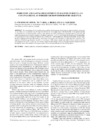Please use this identifier to cite or link to this item:
https://accedacris.ulpgc.es/jspui/handle/10553/9740
| Title: | Embryonic and larval development of haliotis tuberculata coccinea reeve: an indexed micro-photographic sequence | Authors: | Courtois De Viçose, G. Viera, Mª del Pino Bilbao Villena, Amaia Izquierdo, M. S. |
UNESCO Clasification: | 251092 Acuicultura marina | Keywords: | Abalone Embryonic and larval development Haliotis tuberculata coccinea |
Issue Date: | 2007 | Journal: | Journal of Shellfish Research | Conference: | 6th International Symposium on Abalone Biology, Fisheries and Culture | Abstract: | First description of the complete embryo and larval development of the Canarian abalone (Haliotis tuberculata\ncoccinea Reeve.) was conducted along 39 stages from fertilization to the appearance of the third tubule on the cephalic tentacles\nand illustrated in a microphotographic sequence. Eggs obtained by induced spawning with hydrogen peroxide from the GIA\ncaptive broodstock were stocked at a density of 10 eggs/mL and kept at 23 0.5 BC for 62 h until the formation of the third tubule.\nLive eggs and larvae were continuously observed on a 24 h basis at a 3400 magnification under transmitted light. At each stages,\nspecific morphological features, illustrated by microscopic photographs, were described, as well as the time required for their\napparition. Fertilized eggs diameter was 205 8 mm (mean SD), whereas length and width of larvae ready to undergo\nmetamorphosis were 216.6 5.3 mmand 172 8.8 mm, respectively. Knowledge on the larval morphological development acquired\nthrough this study will contribute to the improvement of larval rearing techniques for this abalone species. | URI: | https://accedacris.ulpgc.es/handle/10553/9740 | ISSN: | 0730-8000 | DOI: | 10.2983/0730-8000(2007)26[847:EALDOH]2.0.CO;2 | Source: | Journal of Shellfish Research [ISSN 0730-8000], v. 26, p. 847-854 | Rights: | by-nc-nd |
| Appears in Collections: | Actas de congresos |
SCOPUSTM
Citations
46
checked on Jun 8, 2025
WEB OF SCIENCETM
Citations
35
checked on Jun 8, 2025
Page view(s)
67
checked on Oct 22, 2022
Download(s)
205
checked on Oct 22, 2022
Google ScholarTM
Check
Altmetric
Share
Export metadata
Items in accedaCRIS are protected by copyright, with all rights reserved, unless otherwise indicated.
